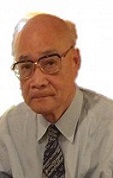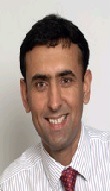Day 1 :
Keynote Forum
Igor Kosacki
Honeywell International, Inc., USA
Keynote: Nanomaterials and new technologies for Oil and Gas
Time : 09:30-09:55

Biography:
Igor Kosacki, Ph.D. is currently Engineering Manager, Corrosion Solutions at Honeywell International Inc. In his current role, Dr. Kosacki is responsible for the operation of Corrosion Solution Laboratory and the development new research program for oil and gas materials. Igor Kosacki received his Ph.D. in physics from the Institute of Physics Polish Academy of Sciences, Warsaw, Poland. In 1992 he joined the Crystal Physics and Electroceramics Laboratory at Massachusetts Institute of Technology where he worked as Visiting Professor. In 1995-2001 he was employed by University of Missouri-Rolla as Associate Professor. Next, he was working at Oak Ridge National Laboratory (2001-2006) and Shell Exploration & Production (2006-2013) as Senior Scientist. He recently joined (since July 2013) Honeywell. Igor Kosacki’s research activity is focused on the processing of advanced functional materials for energy and oil and gas technologies. The area of interest includes ceramics, thin films and nanocrystalline structures and the study of their electrical, structural and optical properties related to microstructure and fabrication. Dr. Kosacki is an active member of Materials Research Society, The American Ceramic Society, as well as, NACE. He has been involved as a member of the number conference advising committees and served as the chairmen for various symposia. Igor Kosacki is widely published and has over 100 technical papers including book chapters and review articles in the area of materials research. He has more than 4500 citations in the scientific literature.
Abstract:
Progress in development of advanced technologies for unconventional oil and gas production requires new materials stable at high pressures (~200atm), temperatures (~250C) and the ability to work in the presence of aggressive/corrosive environmental parameters including H2S, H2 and CO2. Radical innovation related to new materials and a better understanding of metal corrosion effects occurring on material surfaces under high pressure and temperature are crucial. In addition, a better understanding of metal/liquid interaction will bring new insights on corrosion and will drive improvements in monitoring and protection. Those findings are necessary for successful design and modeling new functional materials for unconventional oil and gas. In this presentation, new insights adapting fundamental sciences to accelerate development of new technologies for unconventional oil and gas will be discussed. Developing a more fundamental understanding of metal/environment interactions will facilitate effective application of new monitoring technologies leading to enhanced operational safety and reliability. This lecture focuses on methodologies to develop new oil and gas technologies through physics, chemistry and materials science. The presentation will also provide an overview of corrosion/materials characterization work conducted at Honeywell’s state-of-the-art corrosion lab in Houston, Texas. A few examples of Honeywell’s corrosion- and materials-related work include:
- develop new functional materials - sensors, proppants, separation membranes and catalysts
- improve energy efficiency – process and corrosion monitoring
- corrosion testing under high pressure and temperature by electrochemical methods
- processes monitoring in situ and real time by optical spectroscopy
Keynote Forum
Haruo Sugi
Teikyo University, Japan
Keynote: Electron microscopic visualization and recording of myosin head power stroke producing muscle contraction using the gas environmental chamber
Time : 09:55-10:20

Biography:
Haruo Sugi completed his PhD at the age of 28 years from the University of Tokyo. He worked in Columbia University and the National Institute of Health from 1965 to 1967. He was a Professor in Physiology in Teikyo University from 1973 to 2004, when he became Emeritus Professor.
Abstract:
Muscle contraction results from relative sliding between actin and myosin filaments, which in turn is produced by attachment-detachment cycle between myosin heads extending from myosin filaments and corresponding sites on actin filaments. Although myosin heads are believed to repeat power and recovery strokes coupled with ATP hydrolysis to produce the filament sliding, the amplitude of myosin head strokes still remains to be a matter of debate and speculation. As early as the late 1980’s, we started using the gas environmental chamber (EC) to visualize and record myosin head motion coupled with ATP hydrolysis, in hydrated actin and myosin filament mixture mounted in the EC. We first determined critical incident electron dose not to impair function of myosin head to be ~10-4C/cm2. Based on these absolute limitations, we observed hydrated myosin filaments, in which myosin heads were position-marked with colloidal gold particles via various antibodies to myosin head. ATP was applied by passing current through an ATP-containing microelectrode. On ATP application, individual myosin heads were found to perform reversible power stroke. The amplitude of power stroke was ~3.3nm at the distal region of myosin head catalytic domain, and ~2.4nm at the myosin head converter domain. Since only a small proportion of myosin head could be activated with applied ATP, the Ca2+-activated myosin heads had to perform power stroke without causing gross filament sliding, i.e. in the isometric condition. At low ionic strength, the amplitude of myosin head power stroke increased to >5nm, in good agreement with our finding that, in Ca2+activated muscle fibers, the force generated by individual myosin heads increases two fold. We emphasize that our work constitute the first success in visualizing and recording myosin head power stroke electron microscopically.
Keynote Forum
Jas Pal Badyal
Durham University, United Kingdom
Keynote: Functional nanocoatings
Time : 10:20-10:45

Biography:
Jas Pal Badyal was awarded BA/MA (1985) and PhD (1988) degrees from Cambridge University; where he subsequently held a King’s College Fellowship and the Oppenheimer Fellowship. He has been recipient of many honors relating to his work on Functional Surfaces, including the Harrison Prize from The Royal Society of Chemistry; the Burch Prize from The British Vacuum Council; and the IAAM Medal (International Association of Advanced Materials). His research has led to 3 successful start-up companies: Surface Innovations Ltd; Dow Corning Plasma Ltd; and P2i Ltd (2013-2014 International Business Award for \'Most Innovative Company in Europe\').
Abstract:
The worldwide market for functional surfaces exceeds $50 billion per annum (US Department of Energy). A key driver is the added value that can be imparted to commercial products by the molecular engineering of their surface properties. For example, the cleanliness of optical lenses, the feel of fabrics, the resistance of biomedical devices to bacteria, the speed of computer hard disks, and even the wear of car brake pads are all governed by their surface properties. The fabrication of such surfaces requires the incorporation of specific functional groups; for which there exists no shortage of potential methods including: self-assembled monolayers (SAMs), Langmuir-Blodgett films, dip-coating, grafting, chemical vapour deposition, to name just a few. However such techniques suffer from drawbacks including substrate-specificity (cannot be easily adapted to different materials or geometries) and environmental concerns associated with the utilization of solvents, strong acid / base media, or heat. Plasma surface functionalization is a promising alternative which offers a wide range of benefits including low energy consumption, absence of solvents, minimal waste, rapid treatment times, scalability, and ambient processing temperatures. The molecular tailoring of solid surfaces will be described including super-repellency, non-fouling, thermo responsive, rewritable, opto-chiral, antibacterial, capture and release, and nano-actuation. The application of this research has led to 37 patent families and the establishment of 3 successful start-up companies (Surface Innovations Ltd, Dow Corning Plasma Ltd, and P2i Ltd).
Coffee Break 10:45-11:00 @ Foyer
